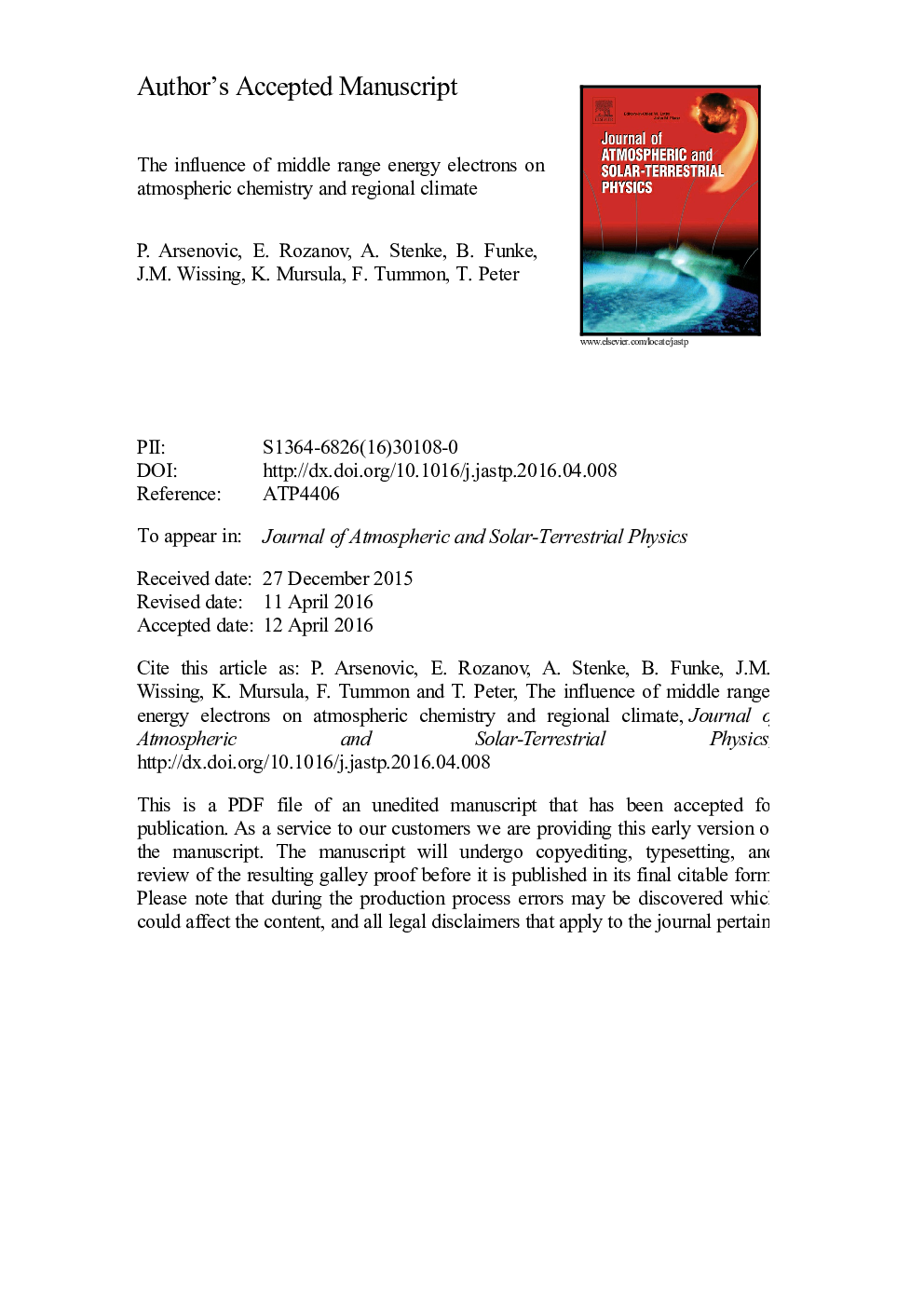| Article ID | Journal | Published Year | Pages | File Type |
|---|---|---|---|---|
| 5487682 | Journal of Atmospheric and Solar-Terrestrial Physics | 2016 | 23 Pages |
Abstract
We investigate the influence of Middle Range Energy Electrons (MEE; typically 30-300Â keV) precipitation on the atmosphere using the SOCOL3-MPIOM chemistry-climate model with coupled ocean. Model simulations cover the 2002-2010 period for which ionization rates from the AIMOS dataset and atmospheric composition observations from MIPAS are available. Results show that during geomagnetically active periods MEE significantly increase the amount of NOy and HOx in the polar winter mesosphere, in addition to other particles and sources, resulting in local ozone decreases of up to 35%. These changes are followed by an intensification of the polar night jet, as well as mesospheric warming and stratospheric cooling. The contribution of MEE also substantially enhances the difference in the ozone anomalies between geomagnetically active and quiet periods. Comparison with MIPAS NOy observations indicates that the additional source of NOy from MEE improves the model results, however substantial underestimation above 50Â km remains and requires better treatment of the NOy source from the thermosphere. A surface air temperature response is detected in several regions, with the most pronounced warming occurring in the Antarctic during austral winter. Surface warming of up to 2Â K is also seen over continental Asia during boreal winter.
Related Topics
Physical Sciences and Engineering
Earth and Planetary Sciences
Geophysics
Authors
P. Arsenovic, E. Rozanov, A. Stenke, B. Funke, J.M. Wissing, K. Mursula, F. Tummon, T. Peter,
